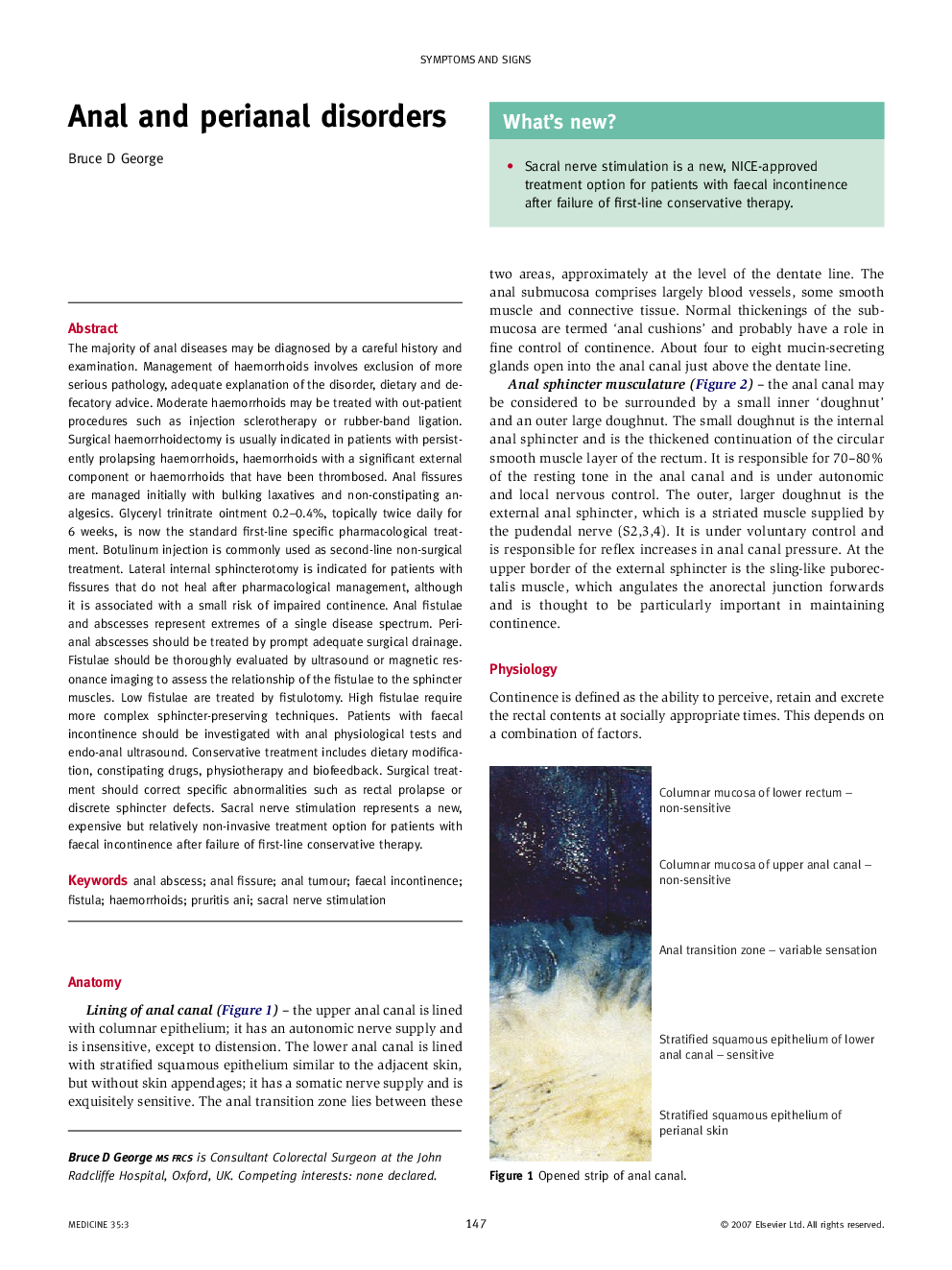| کد مقاله | کد نشریه | سال انتشار | مقاله انگلیسی | نسخه تمام متن |
|---|---|---|---|---|
| 3808052 | 1245411 | 2007 | 6 صفحه PDF | دانلود رایگان |

The majority of anal diseases may be diagnosed by a careful history and examination. Management of haemorrhoids involves exclusion of more serious pathology, adequate explanation of the disorder, dietary and defecatory advice. Moderate haemorrhoids may be treated with out-patient procedures such as injection sclerotherapy or rubber-band ligation. Surgical haemorrhoidectomy is usually indicated in patients with persistently prolapsing haemorrhoids, haemorrhoids with a significant external component or haemorrhoids that have been thrombosed. Anal fissures are managed initially with bulking laxatives and non-constipating analgesics. Glyceryl trinitrate ointment 0.2–0.4%, topically twice daily for 6 weeks, is now the standard first-line specific pharmacological treatment. Botulinum injection is commonly used as second-line non-surgical treatment. Lateral internal sphincterotomy is indicated for patients with fissures that do not heal after pharmacological management, although it is associated with a small risk of impaired continence. Anal fistulae and abscesses represent extremes of a single disease spectrum. Perianal abscesses should be treated by prompt adequate surgical drainage. Fistulae should be thoroughly evaluated by ultrasound or magnetic resonance imaging to assess the relationship of the fistulae to the sphincter muscles. Low fistulae are treated by fistulotomy. High fistulae require more complex sphincter-preserving techniques. Patients with faecal incontinence should be investigated with anal physiological tests and endo-anal ultrasound. Conservative treatment includes dietary modification, constipating drugs, physiotherapy and biofeedback. Surgical treatment should correct specific abnormalities such as rectal prolapse or discrete sphincter defects. Sacral nerve stimulation represents a new, expensive but relatively non-invasive treatment option for patients with faecal incontinence after failure of first-line conservative therapy.
Journal: Medicine - Volume 35, Issue 3, March 2007, Pages 147–152